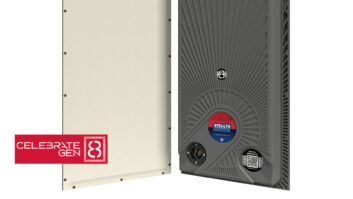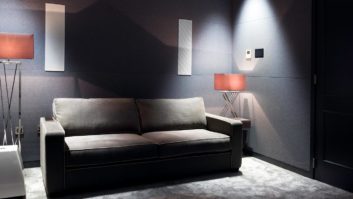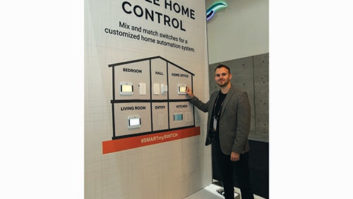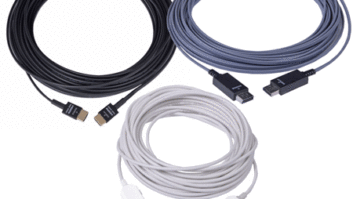There was no better way to end your Friday night at the CEDIA EXPO than with the blinding light of projection demonstrations.
This year marked the shift toward laser as a dominant new technology. Everywhere you look, projection manufactures have multiple offerings loaded with laser technology. On both sides of the pricing spectrum, high powered laser projectors abounded. However, after speaking with many of the projection companies, some of the standard projectors are still going strong. Powered with new firmware updates, they are staying competitive in a market seemingly flooded with new technology.
Although laser technology isn’t new, it is dominating the new product launches. One of the biggest benefits of utilizing lasers as a light source in projection is the vast life of the laser light source. Given that most users use their projection system only sixteen hours a month, having a projection light source that has a lifespan of over 20,00-35,000 hours means that your projections system will operate for years to come.
I found it interesting that many manufactures weren’t touting their lamp life as an opportunity for customers to utilize their systems more frequently. I actually work with a few companies who recommend specifying laser projections systems into spaces that normally don’t call for projection due to usage restrictions. These new laser systems, with their gigantic lifespans, will give dealers the opportunity to specify projection systems into more common spaces where the system can be used daily without concern about bulb life. One of the other issues that laser solves is its ability to instantly turn off or on the projector without any issue to the product or the light source.
While many of the laser projection systems are native to 1080p, there were still many that were native to 4K resolutions. 4K continues to be the holy grail of display technologies. This year DirectTV announced that they will be streaming some content in 4K, Comcast will provide 4K content, and of course, not only does Netflix have House of Cards streaming in 4K, but they will be re-releasing some seasons of Breaking Bad in 4K. This brings up the ongoing question of content delivery and how the current infrastructure will be able to support 4K streaming. Projectors were also shown with built-in lens memory that make switching between different source resolutions a dream. With many projectors showing multiple lens memory storage options — some even up to 10 presets — resolution switching has really been brought under control.
One of the related markets to projection is the surface in which it is used. Screen Innovations debuted a projection film that can be applied directly to glass. With scalable sizes, you can create amazing venues that can be hidden incredibly easily with a simple film. This is one of those products that traditionally is only seen in commercial digital signage applications but has made its way into the residential space. I see great potential for this in modern homes to create a theater where multiple spaces are separated by a glass partition, without the need for a drop down projection system that would traditionally need to be used. Another great application would be using the film to create an outdoor entertainment space by installing the film onto a large glass expanse and rear projecting on to it.
The projections space continues to evolve, and from many of the demonstrations I saw this year at CEDIA EXPO 2014, we as an industry are certainly moving in the right direction.
Matt D. Scott is the president of OMEGA Audio Video. Follow Matt on Twitter @mattdscott.







